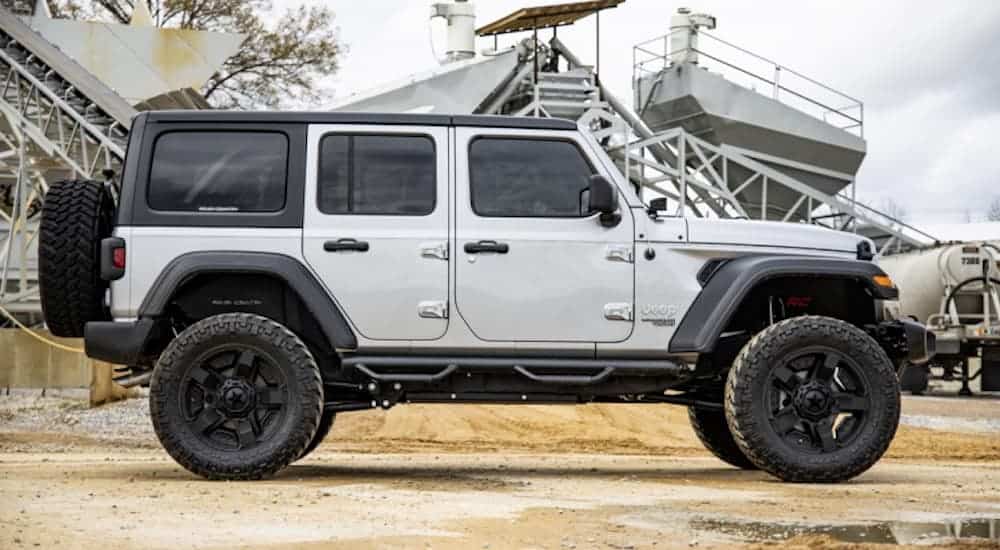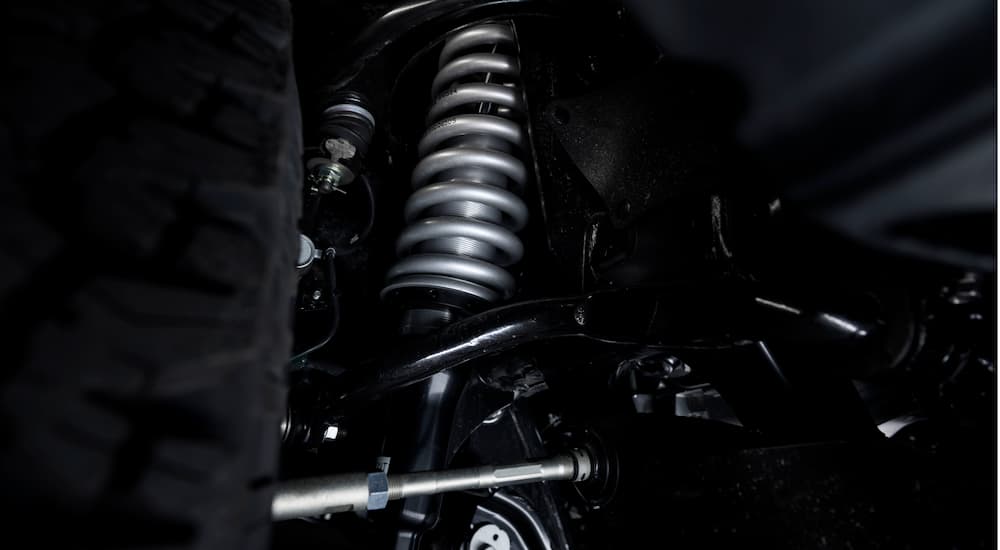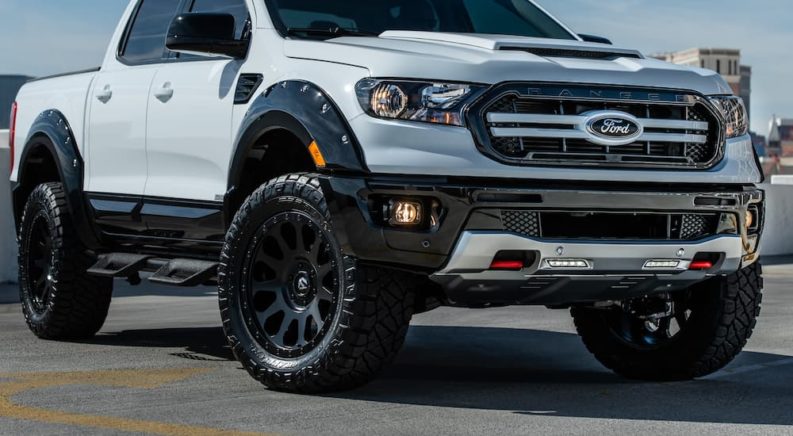If you have been around people that are passionate about trucks or SUVs, then you have probably heard them mention lift kits. You may have wondered about what these are, how they work, and what they actually do (why would someone want one?). Well if so, then you’re in luck – because that’s what we’re talking about here today.
For starters, there are lift kits for trucks, SUVs, and even cars – though they are most common for the first two types of vehicles. Below, I’ll talk about what a lift kit is, the two types that are most frequently used, how they work, and why anyone would want them. I’ll go into the pros and cons of lift kits a little bit too, but there is plenty more that could be said about that subject.
What are Lift Kits?
To put it simply, lift kits are after-market parts and equipment used to lift a vehicle higher up off the ground. These are not made or installed by a manufacturer, but by companies that specialize in making additional parts for different vehicles. In the past, people often rigged up their own lift kits with varying degrees of success and safety. Most kits these days are made by reliable manufacturers that design the shape and size to fit specific vehicles, improving safety and stability.
What are the Two Most Common Types of Lift Kits?
Most lift kits are either body kits or suspension kits. Each of these works differently and produce very different results. Anyone interested in installing a lift kit in a truck, SUV, or car should carefully consider both options as well as the results they are looking for in the end product. You should also consult your local or state laws to make sure there are no restrictions in your area on certain types of kits or limits on how high they are allowed to raise up your vehicle.
Body Lift Kits

One of the most common and simplest types of lift kits are body kits. To understand how these work, you need to understand how vehicles are designed and constructed. Most vehicles today use a “body over frame” construction. This means there is a metal frame that is the foundation of the vehicle, on which the body of the truck, SUV, or car is then placed and attached.
Someone using a body lift kit physically removes the body of the vehicle from the frame and installs the blocks or spacers of the kit between them. The frame is then reattached, with longer bolts to secure it, and the kit basically props the body up away from the frame. No adjustments are made to the suspension or other mechanical systems of the vehicle.
Pros and Cons of Body Lift Kits
Body lift kits are usually the least expensive option and create more space for larger wheels and tires on a truck or SUV. These kits are commonly used for off-road vehicles when someone wants to have bigger wheels for tackling rough trails. Since the lift kit goes between the body and frame, however, a gap is created that can be visible on many vehicles.
Items called “gap guards” can be used to help cover up frame visibility, but these are an added expense. Lifting up the body also moves the center of gravity for the vehicle higher, which can seriously impact how a truck or SUV handles. It’s also worth noting that a body lift kit can only raise the vehicle up between 1 to 3 inches total, so there is a fixed limit on their effectiveness.

Suspension Lift Kits
With suspension lift kits, on the other hand, the entire vehicle is lifted higher up from the axle and wheels of the vehicle. These kits physically increase the height of the suspension of the vehicle itself, through different methods, raising the frame and body. Exactly how this is done depends on the overall design of the suspension and mechanical systems on the vehicle. As such, suspension lift kits are typically more complicated than body lift kits; this means they can be more expensive and more difficult to install.
Pros and Cons of Suspension Lift Kits
The greatest advantage of a suspension lift kit is that there is essentially no limit on how high it can raise a vehicle. While body lift kits are limited to about 3 inches in maximum height, a suspension lift kit can add a foot or more to the clearance of the vehicle. Since the entire vehicle is lifted up, not only the body away from the frame, the handling of a truck is not usually impaired at all; in fact, some suspension kits can improve performance.
Suspension lift kits are more expensive and since they can involve changes to the mechanical systems of a vehicle, may be complicated to install. They can also wear down over time, so they may need to be repaired or replaced and can make routine maintenance potentially more expensive. Greater heights can also make a vehicle difficult to get in and out of, and at some heights, a stabilizer is necessary to avoid rolling over too easily.

What Advantages do Lift Kits Offer?
The major advantage of using a lift kit is that it can increase the clearance beneath a vehicle, which is why they are used so frequently by people who like to take their truck or SUV off-road. Greater clearance not only makes it easier to navigate tricky routes and go over larger rocks, thanks to more suspension travel and wider angles but also allows for larger wheels. A dedicated off-road truck that never travels on standard highways can be kitted out in insane ways, but these are specialized vehicles.
Many people like having a vehicle lifted higher up off the road, giving them a more commanding view down at other drivers. There is also an aesthetic value to them. Lift kits installed on cars have no real performance benefit since cars are not designed to go off-road, and are almost purely for visual effect. While the look of a vehicle raised up by a lift kit isn’t for everyone, there are plenty of drivers that like to customize their rides with them.
General Disadvantages
One of the major disadvantages of any kind of lift kit is that installing it can potentially void the warranty on a vehicle. This varies from manufacturer to manufacturer and depends on the terms and conditions of a warranty, but it is not at all rare. Suspension lift kits in particular, since they change the mechanical system of a vehicle, often void one or more warranties that might be on a truck or SUV.
There are also potential legal ramifications to consider before getting any kind of lift kit installed. States have specific limitations on how high bumpers, lights, and other parts of a vehicle are allowed to be. If you are considering using a lift kit on your vehicle, and it is not a dedicated off-road truck or Jeep, then make sure you know the limit on how high you can raise your truck. Not only can ignoring this open you up to expensive tickets and fines, but it can also result in catastrophic injuries if you end up in a collision with another vehicle.

